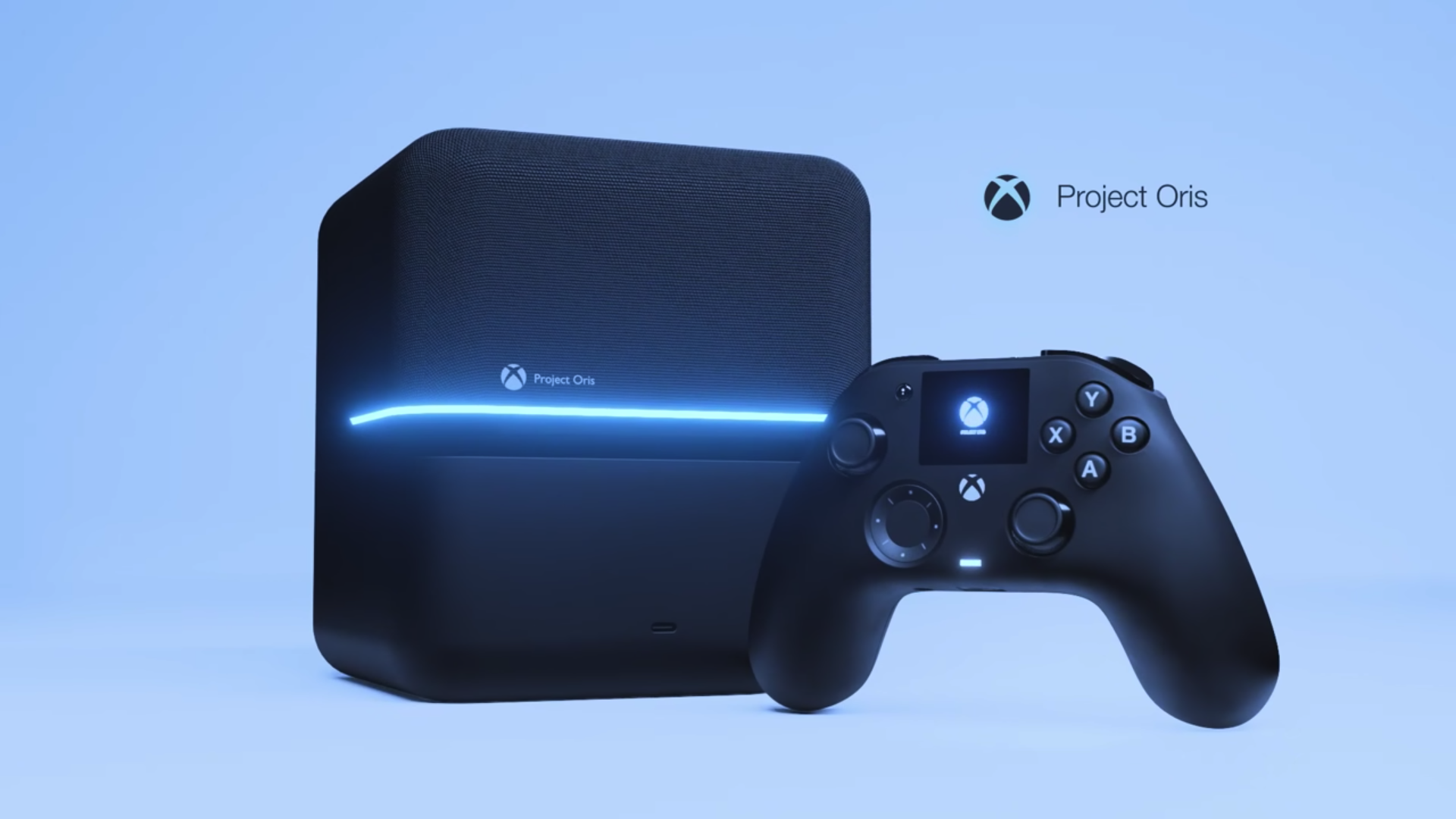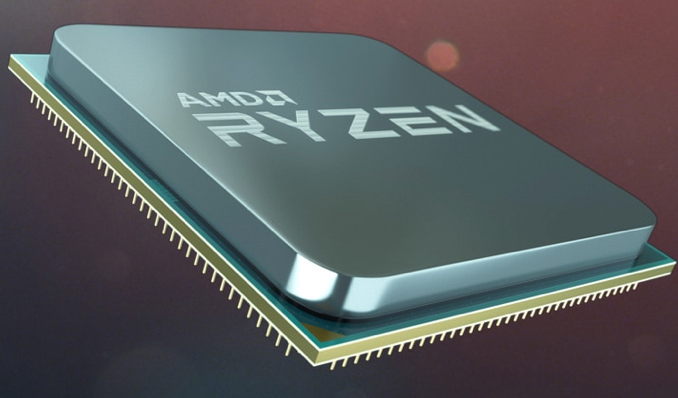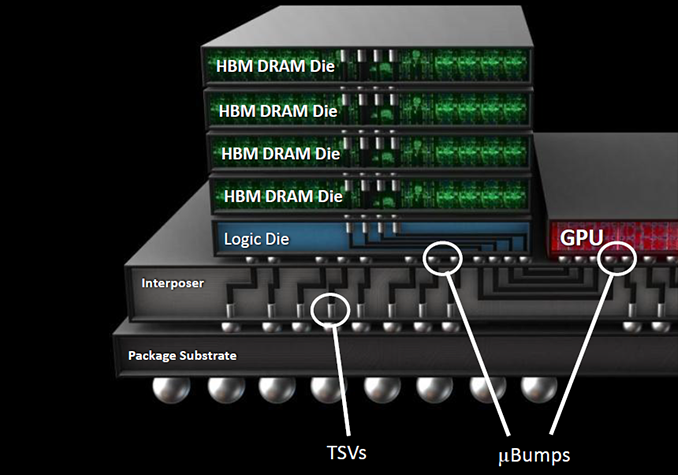thicc_girls_are_teh_best
Gold Member
NOTE: This thread is EXCLUSIVELY for Microsoft discussion; there will be a thread EXCLUSIVELY for Sony discussion Friday!!!
----
Picking back up from the mid-gen refreshes speculation, here's revised 10th-gen speculation. A lot to talk about; doing one thread for Microsoft and one tomorrow for Sony. If any questions over how I arrive at some things (like HBM4), ask them in comments. Most of what you think is random, uses real data trends to extrapolate from. At end of day, this only speculation.
Long read, have been warned. Have fun!
--------------

(Concept render for Series X but, could be a nice placeholder for next Xbox for now)
[MICROSOFT XBOX SERIES Z/SURFACE Z.D]

[CPU]

[AUDIO]

[MEMORY]

[I/O COMPRESSION/DECOMPRESSION/MEMORY CONTROLLER]

[PERIPHERAL SUPPORT]

[WIFI/ETHERNET/BLUETOOTH]
[VR/AR SUPPORT]

[PRICING]
[RELEASE]
-------
----
Picking back up from the mid-gen refreshes speculation, here's revised 10th-gen speculation. A lot to talk about; doing one thread for Microsoft and one tomorrow for Sony. If any questions over how I arrive at some things (like HBM4), ask them in comments. Most of what you think is random, uses real data trends to extrapolate from. At end of day, this only speculation.
Long read, have been warned. Have fun!
--------------

(Concept render for Series X but, could be a nice placeholder for next Xbox for now)
[MICROSOFT XBOX SERIES Z/SURFACE Z.D]
>PC-like modular design specification (Series Z)
>Future-proofed design; upclockable CPU
>Custom-built GPU card; upgradable
>No standard VR or AR headset device included; compatible with helmets from
several brands, i.e Samsung and HTC
>Marketed as a next-gen gaming, productivity & business high-end laptop
device (Surface Z.D)
>Two models; Series Z and Surface Z.D
>Series Z uses Xbox OS & has scaled-down port interface counts & some
reduced feature support. Sold at traditional loss-leading model
>Surface Z.D uses Windows Next Home OS**, has expanded port interface*, slots, &
some additional QoL feature support. Sold at profit
** = Not LITERALLY Windows Next Home OS; MS has Core OS; designing
mobile OS variant called Win 10X. "Windows Next Home OS" is placeholder
term for any Home Edition/Mode-type variant version Microsoft does for
next generation of Windows developed based off Core OS or Core OS future rev.
* = Some of this via Docking Bay expansion module; MOTL
>Surface Z.D intended for productivity, gaming and business work tasks,
has same specs as Series Z
>Both utilize same default CPU, GPU, audio, SSD, RAM configs
>Surface Z.D is laptop-style device similar to Surface Book 3, provided
in a single configuration. Same processor and RAM components as Series Z.
Surface Z.D operates in two modes: Portable and Docked.
>Portable Mode uses it as laptop, CPU & GPU clocks are lowered
to consume less power, provide suitable battery life.
>Docked Mode connects Surface Z.D to Docking Bay, with special
cooling pass-through compartment that connects to portion of the Surface
Z.D when piece of the unit is removed, provides additional cooling
/thermal control. Allows Surface Z.D to operate at full
clocks, i.e same clocks as Series Z's CPU & GPU. Recommended to
keep Series Z.D connected for charge via AC mode.
>Docking Bay for Surface Z.D not included in the default configuration,
is included in another configuration for additional fee. Surface Z.D
does not need Docking Bay to function.
>Docking Bay includes four additional PCIe slots, which the Surface Z.D
uses to address additional peripherals. This leverages use of a system
bus extension.
>Surface Z.D comes with high-quality 17" AMOLED 6K display touchscreen
with up to 300 Hz refresh rate
>Both provide support for Optane-style "M.NVRAM" form-factor persistent storage,
PCIe 6.0-CXL links, 2 per slot (16 GB/s per slot), 2x slots
>Series Z does not come with included persistent memory storage. Can
support 2x 16 GB/s M.NVRAM cards (one per slot), 256 GB capacity each, for
512 GB @ 32 GB/s.
>Surface Z.D comes with 128 GB of Intel Optane DC persistent memory as
2x 12 GB/s M.NVRAM cards for 24 GB/s bandwidth. Can support 2x 16 GB/s
M.NVRAM cards (one per slot), 512 GB capacity each, for 1 TB @ 32 GB/s.
>Series Z supports 3P GPUs. However, the Series Z is only compatible
with specific GPUs from Microsoft/AMD meant for the Z. Specific
GPUs will be made available at a later date; require change of modular PSU.
Surface Z.D does not support 3P GPUs, GPU is soldered onto the motherboard
and integrated into the package design.
>Series Z supports BIOS-level safe detection feature; system is rated for installation
of specific peripheral components in PCIe slots that fit a given power profile.
Devices exceeding this cannot be authorized installation. CPU upclocking only
permitted at BIOS level, on detection of new installed GPU. GPU installation
requires power to be off, requires PSU replacement (PSU comes with GPU package).
If GPU is removed when power on, system shuts down; if new GPU is installed and
system turned on, system detects as unauthorized change, shuts down unless previous
GPU and PSU are reinstalled.
>Implementation of advanced SAM/BAR addressing scheme enforced through custom block.
Handles data coherency and transfer of info from storage, NVRAM, GPU and CPU memory pools.
Hardware bandwidth limit of 80 GB/s
>NAND decompression I/O built into custom data management block. Supports 4:1 decompression ratio.
>Custom data management block supports ringbus & arbitration; allow CPU, GPU, audio to share
access to storage and NVRAM

[CPU]
>ARCHITECTURE: ZEN-ARM
>GENERATION: 3
>CORES: 16
>THREADS: 32
>CLOCK: 5.2 GHz
>L1$: 64 KB (per core), 1 MB (total)
>L2$: 1 MB (per core), 16 MB (total)
>L3$: 16 MB (all)
>SOCKET: N/A (embedded CPU)
**Series Z CPU upclockable with new MS/AMD GPU installations

[GPU]
>ARCHITECTURE: RDNA
>GENERATION: 7
>PROCESS: N3P
>CONFIG: Chiplet
>SHADER ENGINES: 2
>SHADER ARRAYS (per SE): 4 (HSE-1), 2 (HSE-2)
>COMPUTE UNITS: 80
>HSE-1: 56 CUs (4x Dual 7 CU SAs)
>HSE-2: 24 CUs (2x Dual 6 CU SAs)
>COMPUTE UNIT CONFIGURATION: Dual CU
>SHADER CORES (PER CU): 96
>SHADER CORES (TOTAL): 7680
>ROPs: 128
[* = In Series Z, both HSEs technically have 64 ROPs; however there
is additional logic built into the GPU allowing HSE-1 to use one
of the 32 ROP banks in HSE-2 as if it were a 3rd 32-block ROP bank.]
>TMUs: 6 (per CU), 480 (total)
>ALUs/SHADER UNITS: 7680
>STATE MODES (IF ANY): 4; FULL (80 CUs), HSE-1 (56 CUs), HSE-2 (24 CUs), DUAL-HALF (56 HSE-1, 24 HSE-2)
>WHAT IS STATE MODE: A way to dynamically shift power across sections of the GPU so that a given power draw profile can
be maintained while increasing specification of performance for active parts of GPU. "Inactive" portion essentially goes into
Standby Mode, data in cache is kept resident as required. Since Inactive portion is still technically active (just at much lower
clocks, 25 MHz), specific low-impact tasks WRT data management can still be done on Inactive portion if desired.
>CLOCK FREQUENCIES: 2723 MHz (FULL), 4291.388 MHz (HALF-SE 1), 4522.496 MHz (HALF-SE 2), 2723 MHz (DUAL-HALF)
>IPC: 2
>IPS: 4875.92 million IPS (FULL), 8206.964 million IPS (HALF-SE 1), 9044.993 million IPS (HALF-SE 2), 4875.92 million IPS (DUAL-HALF)
>THEORETICAL FLOATING POINT OPERATIONS PER SECOND: 41.825 TF (FULL), 46.141 TF (HSE-1), 20.839 TF (HSE-2), 41.825 TF (DUAL-HALF)
># PRIM UNITS: 4 (2 each SE, 1 each SA)
># PRIMs/CLOCK PER UNIT: 4
># TRI RAS/CLOCK PER UNIT: 2
>PRIMITIVES PER CLOCK: 16
>TRIANGLES PER CLOCK: 8
>GEOMETRY CULLING RATE: 43.568 billion (FULL), 34.331 billion (HSE-1), 36.179 billion (HSE-2), 43.568 billion (DUAL-HALF)
>TRIANGLE RASTERIZATION RATE: 21.784 billion (FULL), 17.1655 billion (HSE-1), 18 billion (HSE-2), 21.784 billion (DUAL-HALF)
>PIXEL FILL RATE: 348.544 Gpixels/s (FULL), 411.973 Gpixels/s (HALF HE-1), 289.439 Gpixels/s (HALF-HE 2), 348.544 Gpixels/s (DUAL-HALF)*
* = 261.408 Gpixels/s (HSE-1, 96 ROPs), 87.136 Gpixels/s (HSE-2 32 ROPs), or:
* = 174.272 Gpixels/s (HSE-1, 64 ROPs), 174.272 Gpixels/s (HSE-2, 64 ROPs)
>TEXTURE FILL RATE: 1307.04 Gtexels/s (FULL), 1441.906 Gtexels/s (HALF SE-1), 651.239 Gtexels/s (HALF-SE-2), 1307.04 Gtexels/s (DUAL-HALF)*
* = 914.928 Gtexels/s (SE1), 392.112 Gtexels/s (SE2)
>THREAD DEPLOYMENT RATE: 81,920 (FULL), 57,344 (HSE-1), 24,576 (HSE-2), 81,920 (DUAL-HALF)
>CACHE CAPACITY:
>L0$: 16 KB per CU (1.152 MB total)
>L1$: 64 KB per dual-CU/WGP (2.304 MB total)
>L2$: 512 KB per Array (2 MB total)
>L3$: 64 MB
>TOTAL: 69.456 MB
>CACHE BANDWIDTH:
>L0$: 41.4 TB/s (FULL), 45.679 TB/s (HALF SE-1), 20.63 TB/s (HALF SE-2), 41.4 TB/s (DUAL-HALF)*
* = 28.98 TB/s (HSE-1), 12.42 TB/s (HSE-2)
>L1$: 28.98 TB/s (FULL), 31.975 TB/s (HALF SE-1), 12.42 TB/s (HALF-SE-2), 28.98 TB/s (DUAL-HALF) (L0$ * .70)
>L2$: 17.388 TB/s (FULL), 19.185 TB/s (HALF SE-1), 7.452 TB/s (HALF SE-2), 17.388 TB/s (DUAL-HALF) (L1$ * .60)
>L3$: 8.694 TB/s (FULL), 9.592 TB/s (HALF SE-1), 3.76 TB/s (HALF SE-2), 8.694 TB/s (DUAL-HALF) (L1$ * .30)
>TOTAL: 96.462 TB/s (FULL), 106.431 TB/s (HALF SE-1), 44.262 TB/s (HALF SE-2), 96.462 TB/s (DUAL-HALF)
[TASK ACCELERATION ENGINE]
**Heavily modified CU for various hardware-based RT, ML, IU, AI tasks
**Each Shader Engine paired with a Task Acceleration Engine
**TAEs can house either 1 or 2 Task Acceleration Arrays
**TAAs can be of any size when it comes to TAUs; ideal
balanced designs call for TAAs that are 50% the core unit
count of a design's Shader Array (i.e design with 5 Dual CU
Shader Arrays (10 CUs) having 5 TAU TAAs).
**TAUs can be seen as pseudo-FPGA cores; each unit has internal
fixed-function hardware plus a modified frontend compared
to normal CUs. TAUs also can range from having the following:
>2,000 To 8,000 logic cells
>16 Kb (2 KB) to 128 Kb (16 KB) distributed RAM (LUT) (acts as L0$)
>64 Kb (8 KB) to 512 Kb (64 KB) BRAM (acts as L1$)
>Internal Command Sync & Program Interface Configuration core
(directed by application to program the FPGA logic into
desired program state, manage unit state)
>Compute Thread Controller core (this is what programmers
interface with in dispatching code for the configured units
in the TAA to execute)
>1 Mb (128 KB) to 4 Mb (512 KB) SRAM (L2$, shared with all units in TAA;
meant for processed data locality storage)
>Shared 6 MB XIP (Execute-in-Place) Resource State Preset-allocated
MRAM (holds the microcode in bit-addressable/byte-addressable
format for immediate configuration)*
* = Will be able to be updated with future firmware changes
* = Shared between both TAAs
* = Used to configure the FPGA logic and fixed-function
aggregate unit states to specific profile presets (RT, ML, AI,
or IU) by storing the relevant set-up and configure/compile data
># TAEs: 2 (1 per SA)
># TASK ACCELERATION UNITS (TAU) PER TAE: 7 (HSE-1), 6 (HSE-2), 13 (TOTAL)
>LOGIC CELLS: 4500 (per TAU); 31,500 (TAE; HSE-1), 27,000 (TAE; HSE-2), 58,500 (total)
>LUT RAM (L0$): 8 KB (per TAU), 56 KB (TAE; HSE-1), 48 KB (TAE; HSE-2) 104 KB (total)
>BRAM (L1$): 32 KB (per TAU), 224 KB (TAE; HSE-1), 192 KB (TAE; HSE-2), 416 KB (total)
>SRAM (L2$): 256 KB (TAE; HSE-1), 128 KB (TAE; HSE-2), 384 KB (total)
>MRAM: 6 MB (total)
># CU: 1 (PER DUAL CU IN SA), 5 (PER SA), 10 (TOTAL)
[AUDIO]
>ARCHITECTURE: Microsoft Next Audio Engine (NAE)
>GENERATION: 1
>DSPs: 4 (4x Logan)
>PROGRAMMABLE LOGIC: 2 (CFPU2 Gen 2)
>Can leverage up to 128 GB/s of system bandwidth; in practice will rarely
require this amount

[MEMORY]
>TYPE: HBM4 (GPU/Audio), DDR6 (CPU)
>GENERATION: 1
>MODULE CAPACITY: 1 GB (GPU/Audio), 4 GB (CPU, per DIMM module)
>MODULE AMOUNT: 24x (HBM4), 2x (DDR6, DIMM modules)
>CONFIGURATION: 2x 12-HI (GPU/Audio), 2-Channel (DDR6)
>I/O PIN BANDWIDTH: 4 Gbps (500 MB/s) (GPU/Audio), 11.2 Gbps (1.7 GB/s) (DDR6)
>I/O PIN COUNT: 128 (GPU/Audio), 64 (DDR6)
>BUS WIDTH: 3072-bit (GPU/Audio), 128-bit (DDR6)
>MODULE BANDWIDTH: 64 GB/s (GPU/Audio), 89.6 GB/s (CPU, per DIMM module)
>TOTAL BANDWIDTH: 1536 GB/s (1.536 TB/s) (GPU/Audio), 179.2 GB/s (CPU), 1715.2 GB/s (1.7152 TB/s) (total)
>TOTAL CAPACITY: 24 GB (GPU/Audio), 8 GB (CPU), 32 GB (total)
*Of GPU/Audio pool, suggested split is 22 GB (1408 GB/s) GPU, 2 GB (128 GB/s) Audio.
Amount adjustable by the developer

[I/O COMPRESSION/DECOMPRESSION/MEMORY CONTROLLER]
[SSD]
>FORM FACTOR: M.2
>INTERFACE: PCIe-CXL
>INTERFACE GENERATION: 6.0
>CONNECTION SLOT(S): 2x x2 (Series Z), 1x x2 & 1x x4 (Surface Z.D)
>NAND TYPE: ZNAND
>NAND MODULE CAPACITY: 2 Tb (256 GB)
>NAND MODULE BANDWIDTH: 4 GB/s
>NAND MODULE LATENCY: 1.8 ms
>NAND MODULE CHANNELS: 4 (per module), 16 (total)
># NAND MODULES: 4x
>DEVICE BANDWIDTH : 16 GB/s
>DEVICE BANDWIDTH SUPPORT: 16 GB/s (x2, Series Z), 32 GB/s (x4, Surface Z.D)
>DRIVE CAPACITY: 2 TB (2048 GB)
>MAXIMUM SUPPORTED DRIVE CAPACITY: 16 TB (16384 GB)(Series Z), 64 TB (Surface Z.D)
[FLASH MEMORY CONTROLLER]
>STORAGE CACHE: DDR6, 2 GB
>INTERFACE SUPPORT: x4 (full) M.2 PCIe-CXL 6.0 NVMe & x2 (half) M.2 PCIe-CXL 6.0 NVMe (Surface Z.D),
2x x2 (half) M.2 PCIe-CXL 6.0 NVMe (Series Z)
>BANDWIDTH CAPACITY (CACHE): 89.6 GB/s
>LATENCY THRESHOLD: Sub-100 ns
[COMPRESSOR/DECOMPRESSOR/MANAGEMENT]
>DECOMPRESSION BANDWIDTH LIMIT (HARDWARE): 64 GB/s
>DECOMPRESSION RATIO: 4:1
>COMPRESSION BANDWIDTH LIMIT (HARDWARE): 64 GB/s
>COMPRESSION RATIO: 4:1
># ENGINES: 6
1: SSD Device Core (manages both SSD units)
2: NVRAM Path Block (PB)
3: CPU Path Block (PB)
4: GPU Path Block (PB)
5: Ethernet/Wifi Path Block (PB)
6: Management Core (MC)

[PERIPHERAL SUPPORT]
>USB GENERATION SUPPORT: GEN 1, GEN 2, GEN 3, GEN 4
>USB-C SUPPORT: YES
># USB PORTS: 4 (Series Z), 3 (Surface Z.D)
(Series Z)
>FRONT: 2x regular USB Gen 4 Type-C 2x2
(controllers, charging kits, etc.)
>BACK: 1x USB Gen 4 Type-A 2x2, 1x USB Gen 3
(Surface Z.D)
>1x regular USB Gen 4 Type-C 2x2, 1x USB Gen 3, 1x USB Gen 2
>MICRO SD SUPPORT: YES
*Physical media delivery (64 GB/128 GB/192 GB Game Cards). Managed by FMC & Decompressor.
*Game Card bandwidth: 72 MB/s
># MICRO SD SLOTS: 1 (Series Z) (FRONT, UHS-III, SDHC class), 2 (Surface Z.D) (1 FRONT, 1 SIDE)
>CF EXPRESS SUPPORT: YES
># CF EXPRESS SLOTS: 1 (Series Z), 1 (Surface Z.D)
*For BC of Series X and Series S Expansion Storage Cards
>THUNDERBOLT SUPPORT: NO (Series Z), YES (Surface Z.D)
># THUNDERBOLT PORTS: 1 (Back)
>PCIe SUPPORT: YES
>PCIe SUPPORT GENERATION: 6.0-CXL
># PCIe SLOTS:
>SERIES Z (6): 1x x8 (64 GB/s) PCIe 6.0-CXL High-Speed slot (GPU support), 2x x2 (16 GB/s each)
M.2 NVMe Gen 6-CXL slots(SSD/storage slots), 2x x2 (16 GB/s each) M.NVRAM slots ( NVRAM support),
1x x2 PCIe 3.0 (for included wireless module)
>SURFACE Z.D (4): 1x x16 (128 GB/s) PCIe 6.0-CXL High-Speed link (GPU), 1x x4 (32 GB/s) M.2 NVMe Gen 6-CXL slot
(SSD/storage slots), 2x x2 (16 GB/s each) M.NVRAM slots ( NVRAM support)
>SURFACE Z.D DOCKING BAY/BLOCK (4): 1x x2 (16 GB/s) M.2 NVMe Gen 6-CXL slot (SSD/storage slot), 2x x4
PCIe 6.0 (general peripherals), 1x x2 PCIe 3.0 (for optional devices like Series Z-branded wireless module)

[WIFI/ETHERNET/BLUETOOTH]
[ETHERNET]
>IMPLEMENTATION: Single Port
>ETHERNET PHYSICAL LAYER: 25 Gbit
>NAME: 25GBASE
>STANDARD: 802.3bq-2016
>CONNECTOR: RJ45
>LINE CODE: 64b/66b
>TRANSCEIVER MODULE: SFP28
>RECOMMENDED CABLE: 25GBASE-CR, 25GBASE-CR-S
>BANDWIDTH: 3.125 GB/s
[WIFI]
>IMPLEMENTATION: Single Module
>NAME: Wifi 7
>STANDARD: 801.11acx
>ENCODE RATE: 8b/10b encoding
>HARDWARE MU-MIMO STREAMS: 12
>BANDWIDTH: 2925.427 Mbps per MIMO, 14.627 Gbps theoretical, 1.828 GB/s converted
>Specs for included wireless transmission module are:
>12 MU-MIMO antenna streams (4x 160 MHz + 4x 320 MHz)
>7 GHz band (7234 MHz)
>Compatible with 160 MHz + 80 MHz channel width
>1659.962 Mbps per MIMO (160 MHz), (60 MHz)
>19.91954489925 Gbps theoretical
>2.48994 GB/s converted
>~ 2.240946 GB/s effective (90% utilization)
>The ethernet/wifi processing block has the following specifications:
>Dual-core/quad-thread high-end ZEN-ARM processor block
>Embedded 256 MB PS-RAM
>25 Gbit ethernet PHY and LOG layer integration; ethernet port link off-chip
ethernet port module (where ethernet cable plugs in)
[VR/AR SUPPORT]
**No included VR/AR headset
**Built-in support for Microsoft Mesh
**Microsoft will build upon partnerships with existing VR headset providers such as Samsung, HTC, Sony etc.
to provide infrastructure for 3P headset compatibility on Series Z systems.

[PRICING]
>SURFACE Z.D:
$2499.99 (Basic model with Windows Next Home Edition)
$2999.99 (Model with Docking Bay)
$2599.99 - $3099.99 (Models with bundled 15 months of Office suite subscriptions)
$2749.99 - $3349.99 (Models with 2 to 4-year Microsoft Protection Plans)
$549.99 (Docking Bay)
>SERIES Z: $499.99
[RELEASE]
>November 2026 (Surface Z.D)
>Fall 2027 or Spring 2028 (Series Z)
-------
Last edited:
